I like to do my homework before spending serious amount of money. I quickly realized that there are only two manufacturers that sell later style exhaust mufflers – a well-known Czech NSU parts supplier/manufacturer and a Polish one. Most of the forum and Facebook group post suggested that the Czech ones are the ones to buy in terms of quality and accuracy to the originals. In short – most claimed that they are worth the price! A quick side note – I have too many bad experiences with chrome-plated exhaust sets, so I was determined to buy a set without chrome, modify them so they fit perfectly, and then get them chrome-plated.
Last autumn I attended the Veterama Mannheim fair in a hope to see the mufflers in person. By the basis of overall fit and finish, I chose the Czech set. Shortly after buying a reproduction set I came across an original muffler, which I had not seen before. Then I put the mufflers side-by-side and the results were so-to-say interesting. Fast forwarding, I also bought a set of mufflers from Polish manufacturer while attending MWB.
So, let’s get to the point of this article – comparison between the three – the Czech, the Polish and the original mufflers.
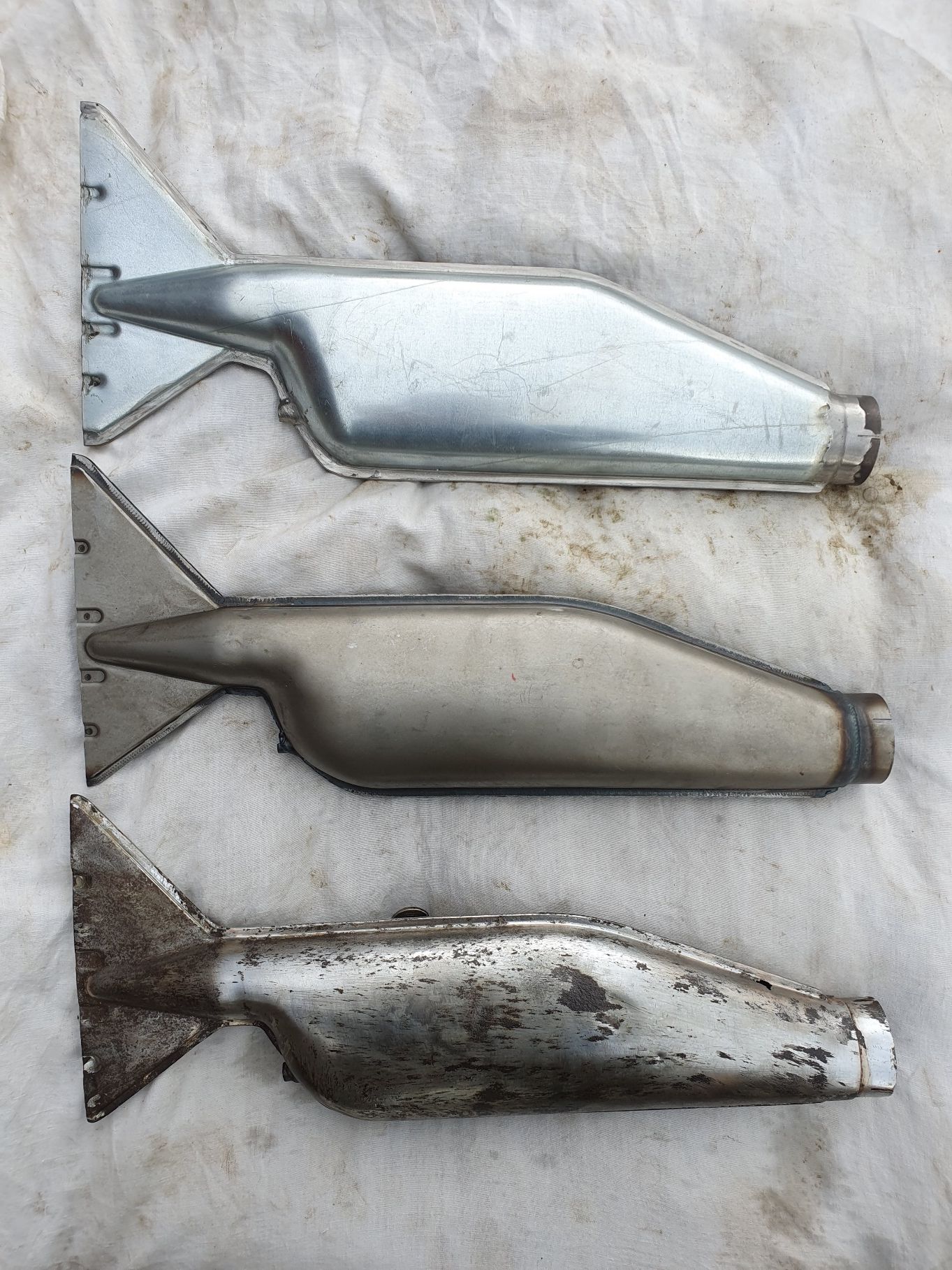 |
 |
Now let’s do a quick recap what are the main differences. But before that, take some time, look at the pictures and find the differences yourself.
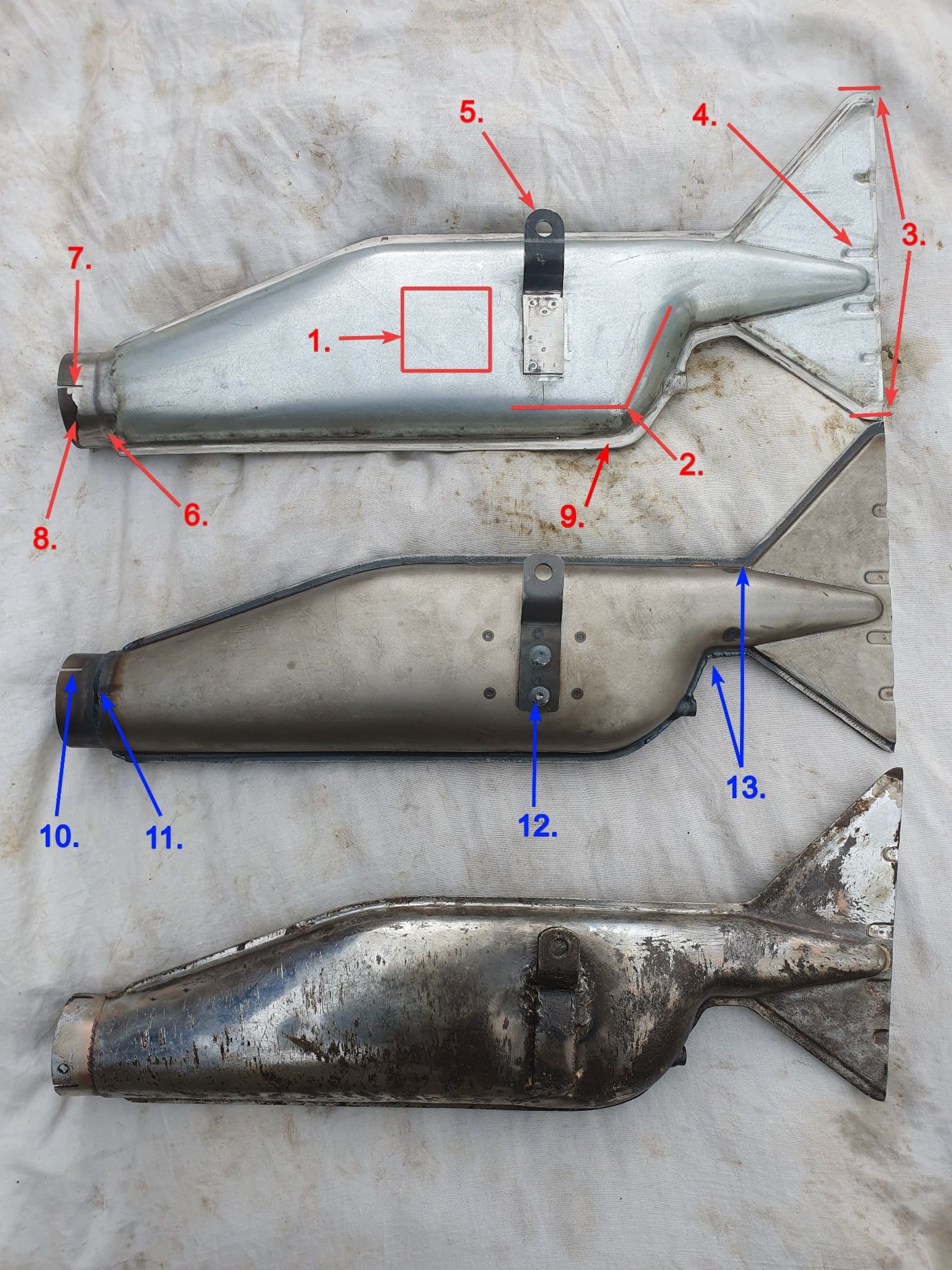 |
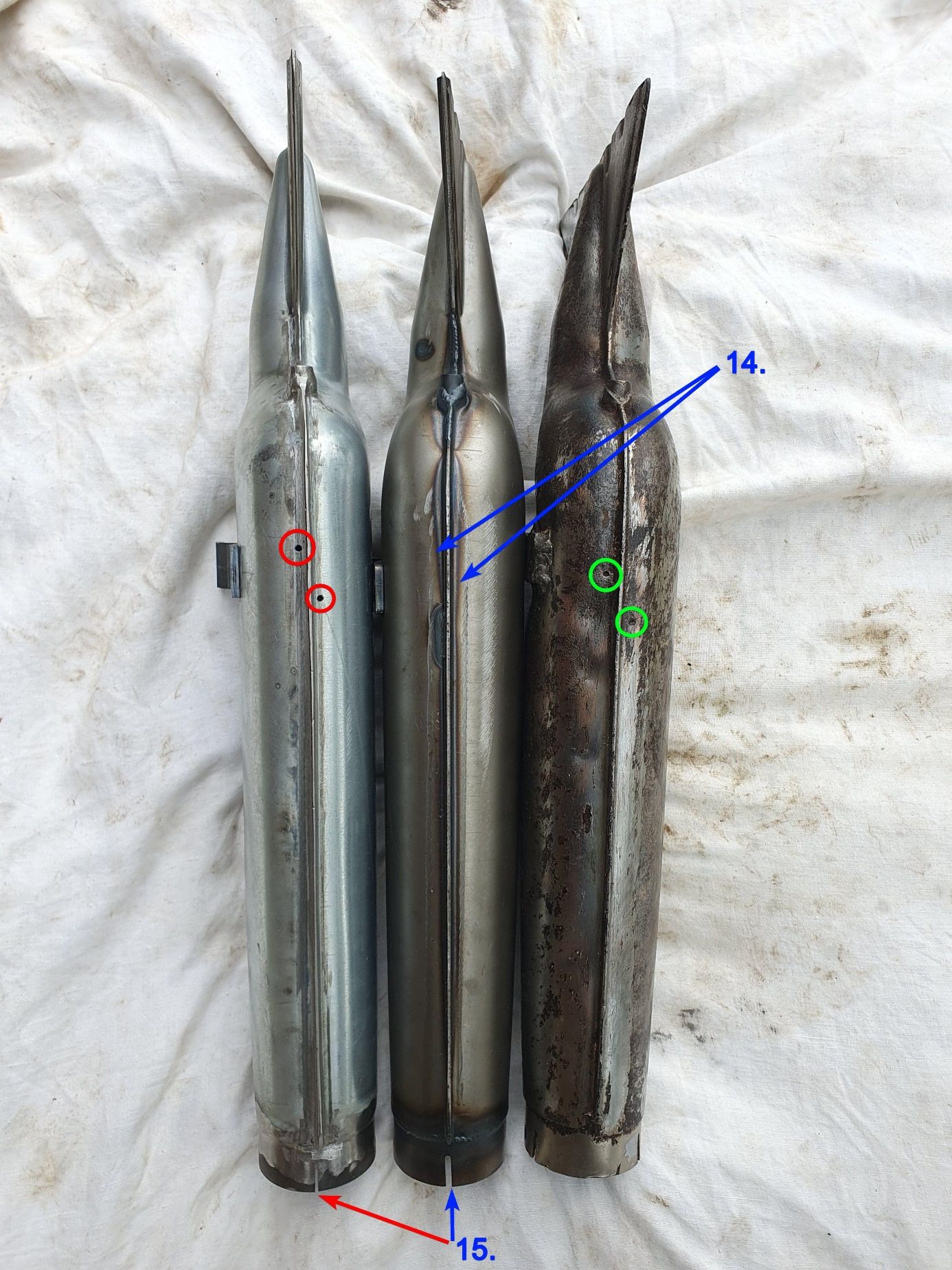 |
Based on figures 3 & 4, the main differences with original muffler are:
1. Base material – zinc-plated sheet metal.
2. Angular shape instead of smooth curves (like on the original and Polish reproductions).
3. Straight parts on top and bottom of the tail too large.
4. Pressings on the tail are too long and too narrow.
5. Fastening bracket has incorrect shape (full radius).
6. Tubular part is welded with TIG and then grinded.
7. Four slits instead of three.
8. No hole in the tubular part.
9. Flanges too wide.
10. Three slits but position in mirrored. No hole in the tubular part.
11. TIG-welded, but not grinded.
12. Plug-welds. Should be grinded flat.
13. TIG-welded sections.
14. No condensation drain holes.
15. Slit position and size varies.
A sharp eye notices even more smaller differences that are present on the reproduction mufflers. Before we conclude with the externals, a picture from the insides of mufflers (diffusers removed). No noticeable differences here.
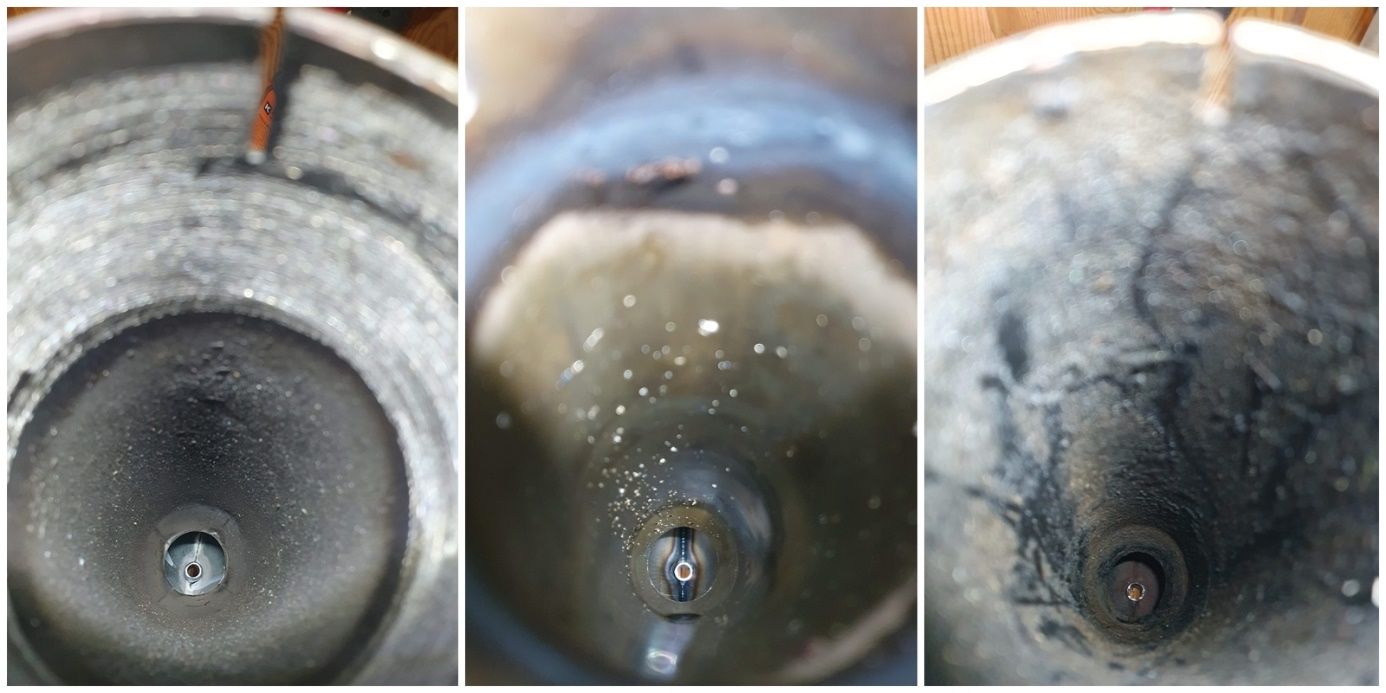 |
Now let’s have a look at the internal parts – the diffusers.
At first glance, all of the three diffusers look remarkably similar in shape and construction.
 |
The thing to note here are the way the diffuser bodies are constructed. Body of the original diffuser is fully seam-welded whereas Polish reproduction having a few spots of welds. The Czech one is constructed from a seamless tube.
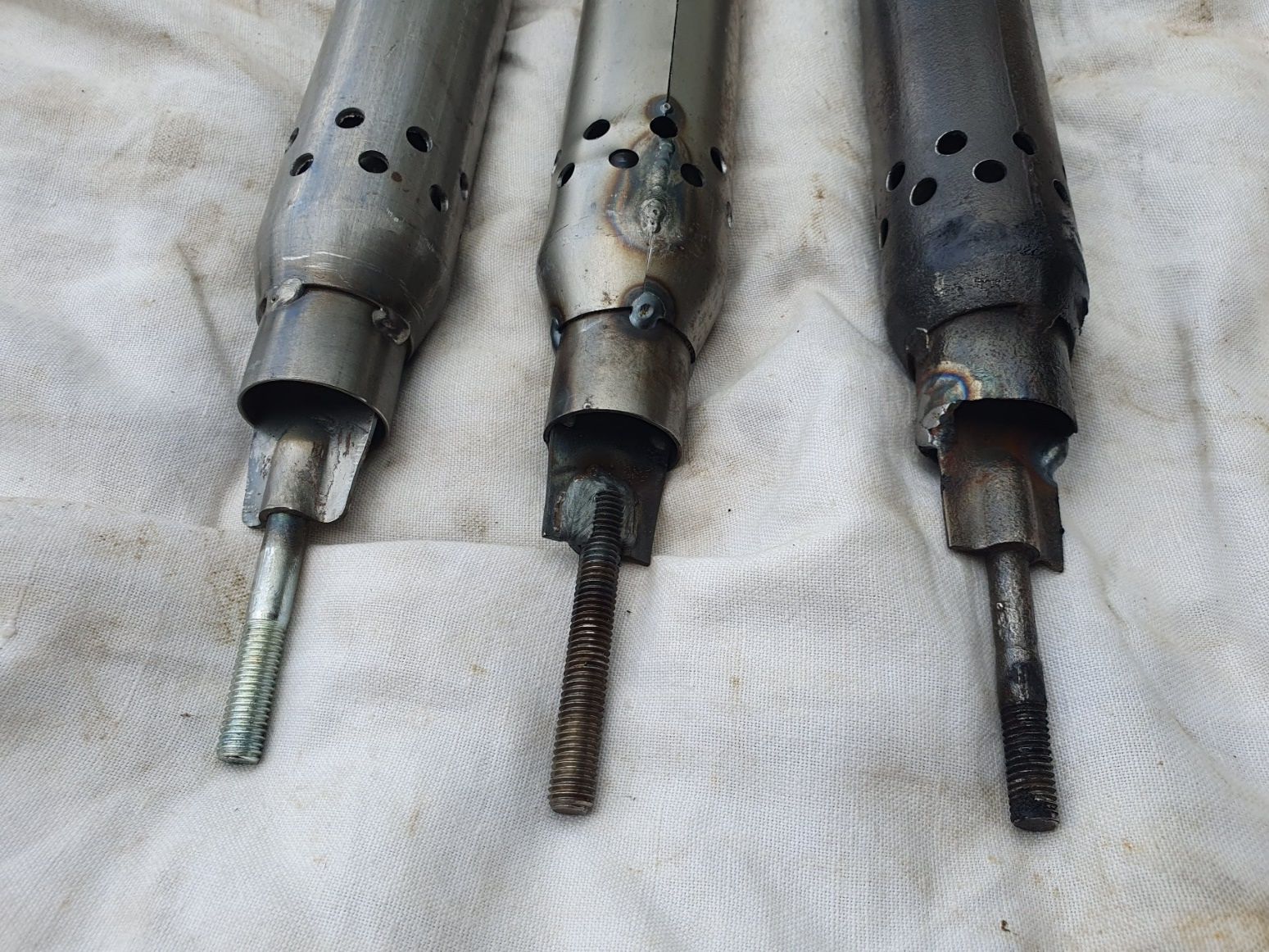 |
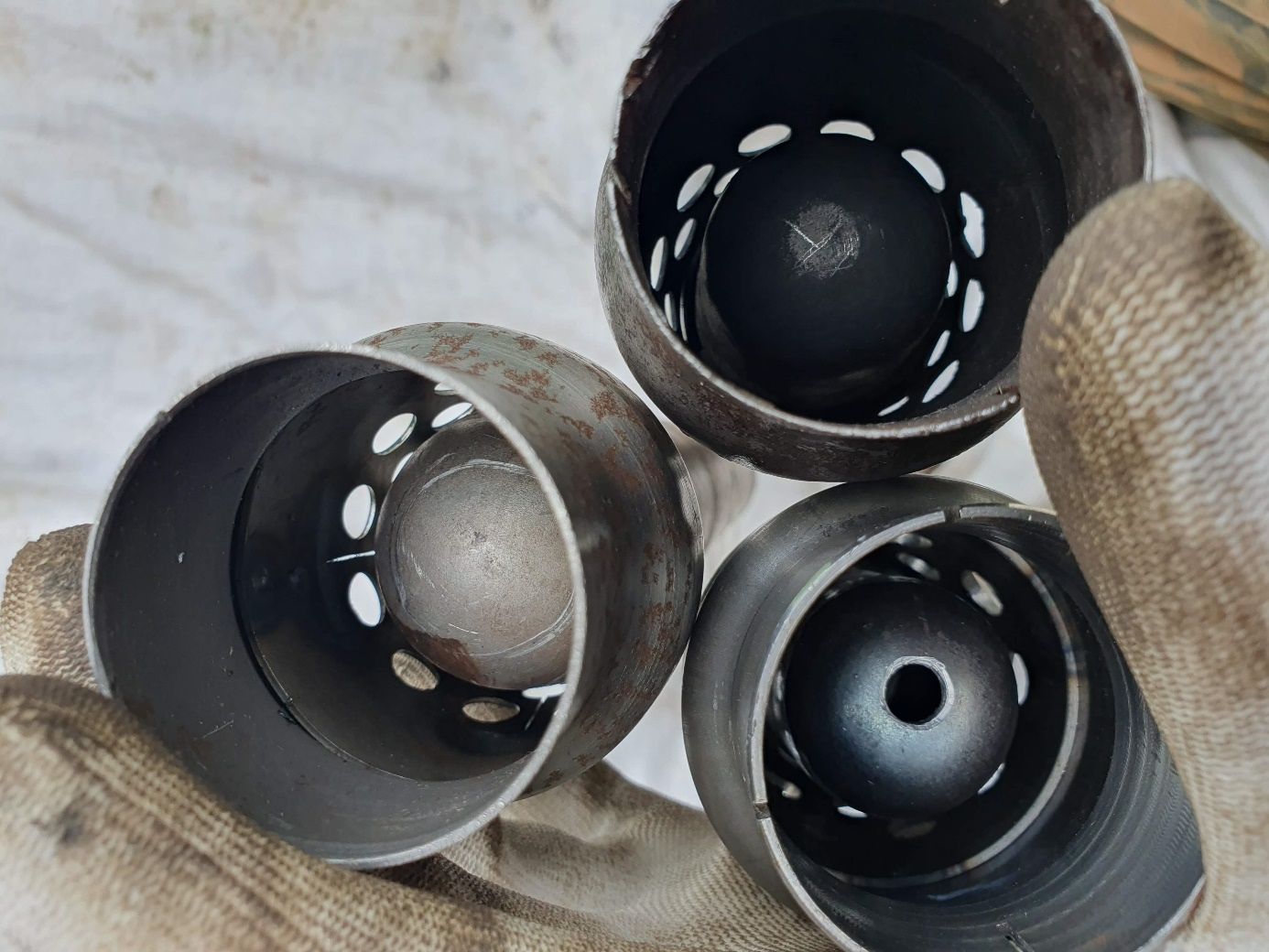 |
When looking at the front parts of the diffusers, the noticeable difference is the size or the conical parts. For some reasons, Czech replica has a hole drilled into it so that the exhaust gasses can pass straight through. This feature would definitely change the exhaust sound. Let’s look at the designs of the cones. Well, for example the front part of the Czech replica has no cone at all, just a straight part that goes into another cylindrical part. Polish replica has a dome-shaped cone that is larger than the one on the original. Take a look at the picture below for clearer understanding.
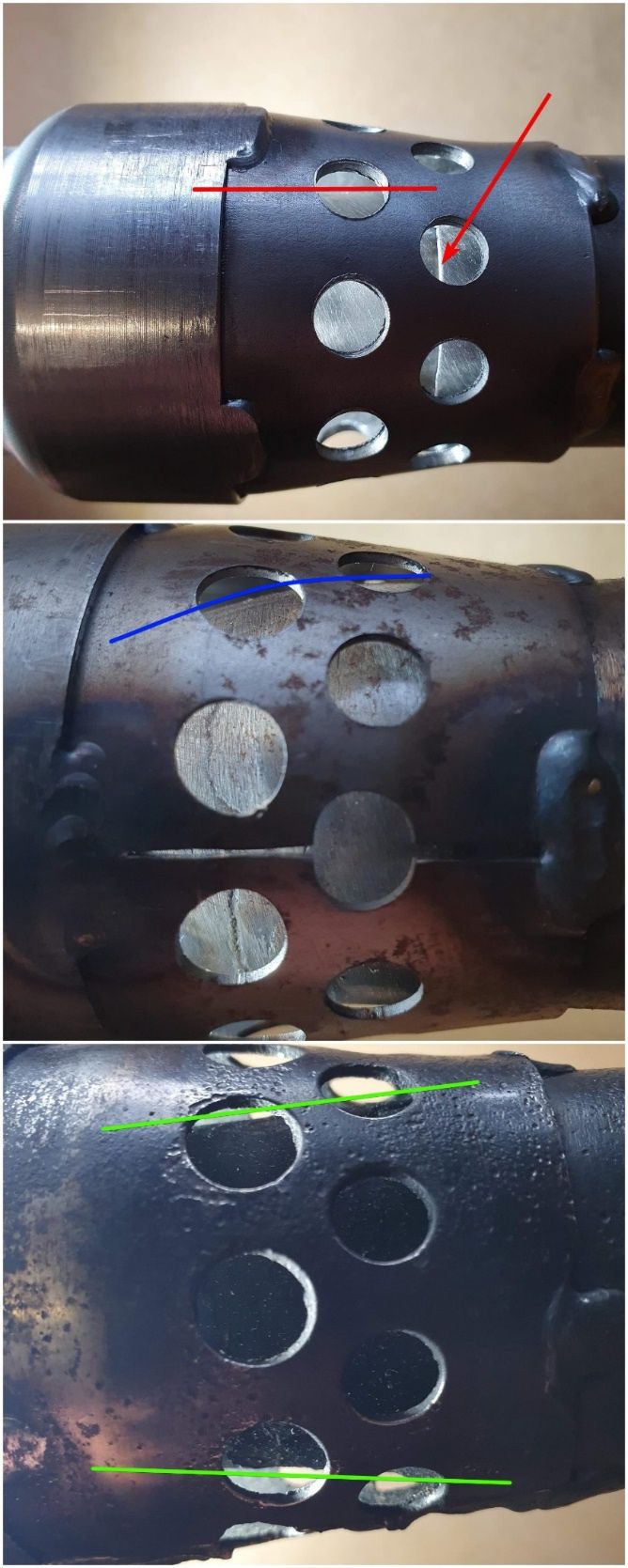 |
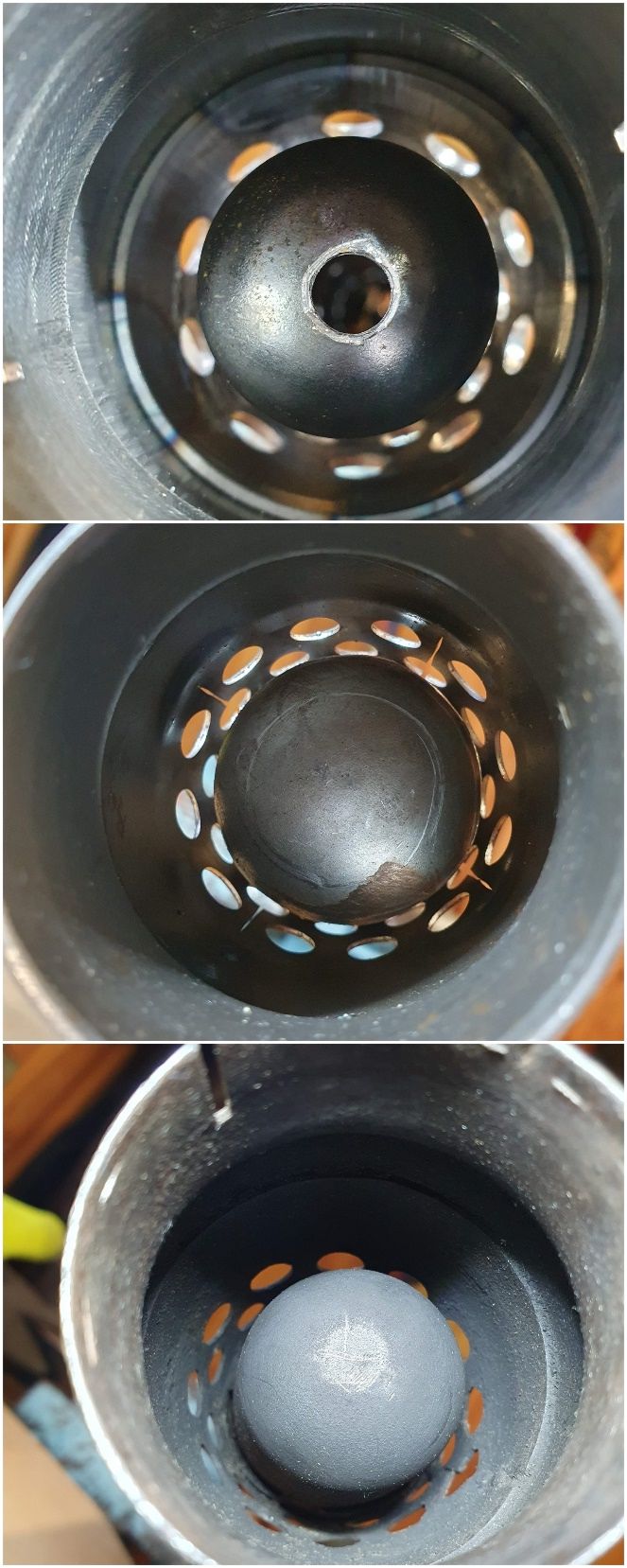 |
And for those, who are interested in overall dimensions and the positions of features, a compilation of pictures with measuring tape included.
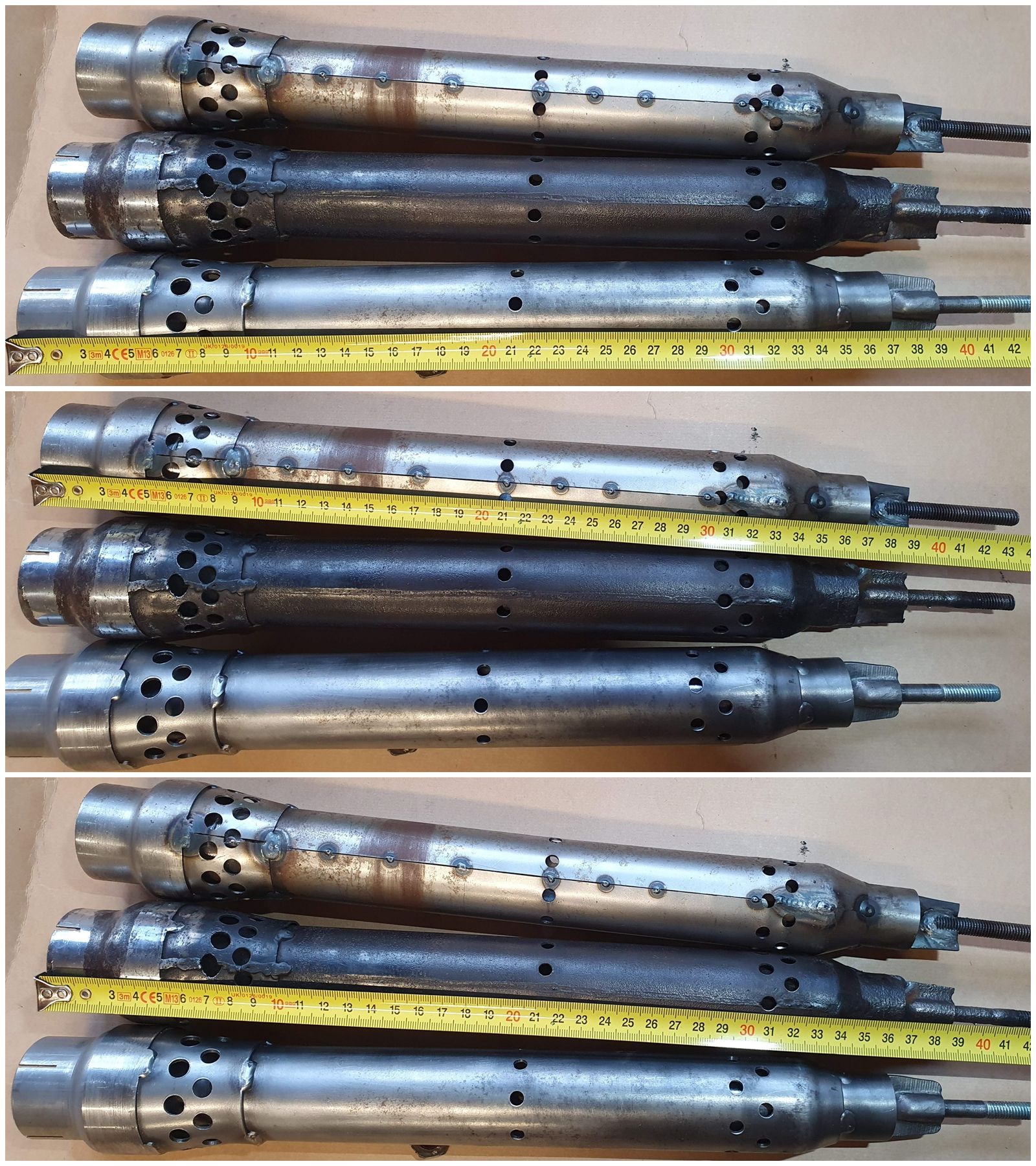 |
In conclusion: Both of the reproduction silencers covered in this article (like the other exhaust parts of the NSU OSL) are riddled with larger or smaller mistakes. But to me it seems strange – you have the original in hand to make a good reproduction, but somehow you choose to cut corners and the end result something that looks like an original piece but does not fully match the original. The motives of such actions stay unclear to me.
All in all, I’m not going to tell you which one to buy and which to avoid. It comes down to the buyer and his preferences. Consider your budget and what is important to you. But remember, the most expensive reproduction could be the most inaccurate. Do your research when buying reproduction parts! I’m now the “happy” owner of two exhaust sets for my NSU 501 OSL as I failed to do enough homework and let my emotions to do the decision making. Good luck!



